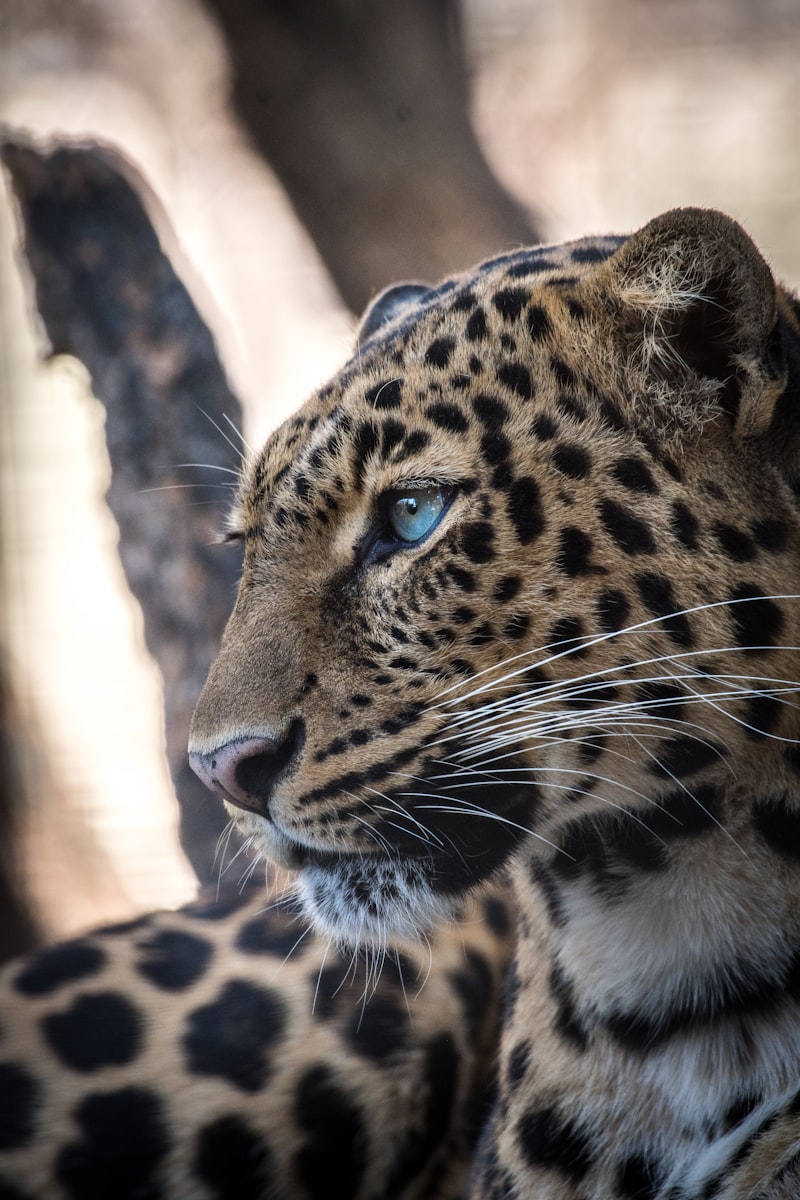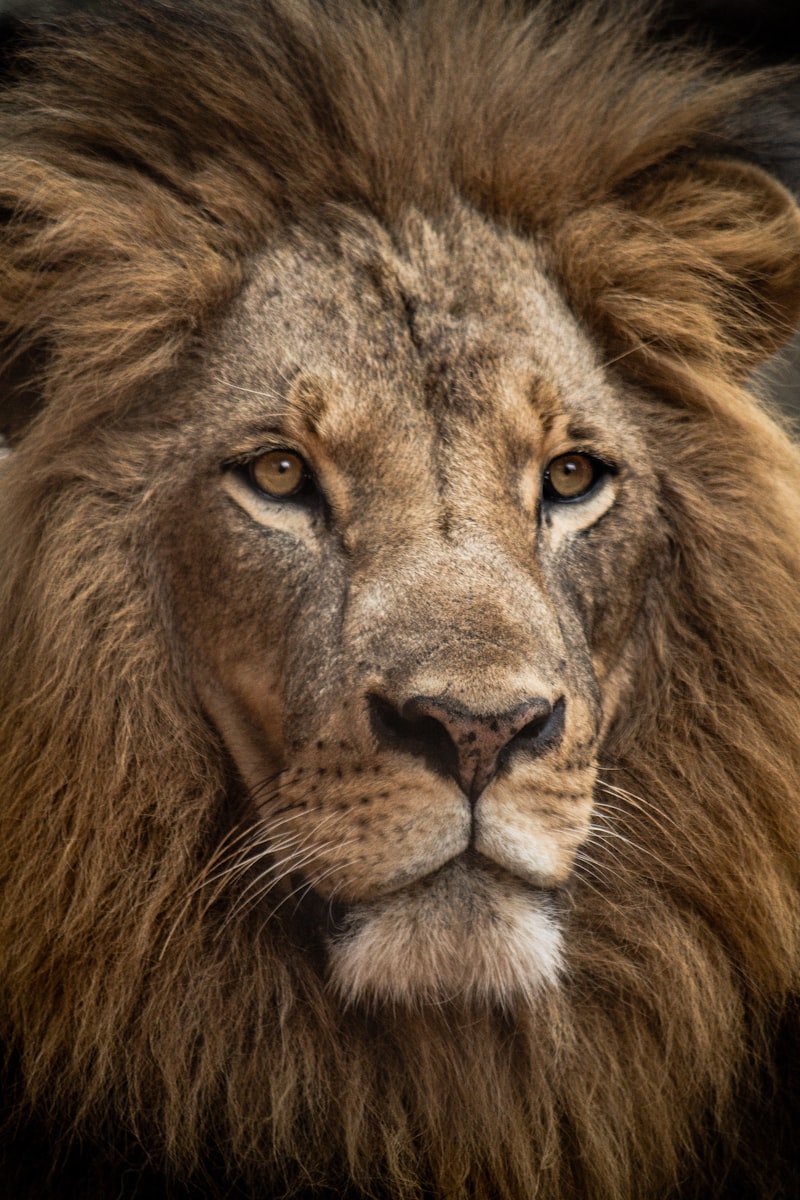Imagine a world without the majestic roar of a tiger echoing through the jungle or the sight of a lioness gracefully stalking her prey on the African savannah. Big cats like tigers, lions, leopards, and cheetahs are not just icons of wilderness; they are critical to maintaining the delicate balance of their ecosystems. However, these magnificent creatures face numerous threats today, making their conservation more urgent than ever.
One of the biggest challenges big cats face is habitat loss. As human populations grow, forests are cleared for agriculture, settlements, and infrastructure development. This encroachment not only reduces the cats’ living space but also fragments their habitats, making it harder for them to find mates and prey.
Poaching is another grave issue. Big cats are illegally hunted for their skins, bones, and other body parts, which are highly valued in traditional medicine and as status symbols. Despite international bans, the demand for these items continues to drive poaching activities, pushing many big cat species towards the brink of extinction.
Climate change poses a newer threat. Shifts in temperature and weather patterns affect prey availability and habitat suitability for big cats. For instance, rising temperatures can alter the distribution of prey species, forcing big cats to adapt or migrate to new areas, which may already be occupied by other animals or humans.
Conservation efforts play a crucial role in safeguarding these iconic predators. National parks and wildlife reserves provide protected spaces where big cats can thrive without direct human interference. Additionally, initiatives focusing on community education and involvement help foster a greater understanding of the importance of these apex predators in local ecosystems.
Collaboration between governments, conservation organizations, and local communities is key to implementing effective conservation strategies. By addressing the root causes of threats like poaching and habitat loss, and by promoting sustainable practices that benefit both people and wildlife, we can ensure a future where tigers, lions, and other big cats continue to roam the wild.
Roaring Success: Innovations in Big Cat Conservation
One of the most revolutionary advancements lies in the realm of genetic research. By delving into the DNA of big cats, scientists can unravel mysteries that have long perplexed conservationists. Understanding genetic diversity not only aids in breeding programs but also helps pinpoint populations at risk of inbreeding, ensuring healthier future generations.
Innovation isn’t just confined to laboratories; it extends to the field with cutting-edge tracking technologies. Gone are the days of relying solely on radio collars. Now, satellite tracking allows researchers to monitor big cats with unprecedented precision. This technology provides real-time data on movement patterns, habitat usage, and even helps mitigate human-wildlife conflict by alerting communities to the presence of these magnificent predators.
In the fight against poaching, technology serves as a formidable ally. Drones equipped with infrared cameras patrol vast expanses of terrain, detecting poachers before they can harm big cat populations. Furthermore, artificial intelligence aids in analyzing vast amounts of data to identify trafficking routes and dismantle illegal wildlife trade networks.
Community involvement is another cornerstone of successful conservation efforts. Engaging local communities not only raises awareness but also fosters a sense of stewardship over natural resources. By providing alternative livelihoods and education, conservationists ensure that protecting big cats becomes a shared goal, benefitting both wildlife and people alike.
As we navigate the challenges of the 21st century, these innovations stand as testament to human ingenuity and dedication. Through collaboration, technology, and unwavering commitment, we can secure a future where big cats continue to roam our planet’s wild spaces with the dignity and freedom they deserve.
Saving Stripes: Global Efforts to Protect Tigers

The plight of tigers is dire. Over the past century, their populations have plummeted drastically, primarily due to habitat loss, poaching, and human-wildlife conflict. Once roaming across vast territories from Siberia to the Indonesian islands, tigers now cling to survival in fragmented habitats across Asia. Conservationists and governments alike have recognized the urgency of protecting these apex predators before it’s too late.
One of the key strategies in tiger conservation is habitat preservation. Efforts are underway to establish protected areas and corridors that connect tiger habitats, allowing these solitary hunters to roam and breed freely. Countries like India, home to the majority of wild tigers, have made significant strides in expanding their network of tiger reserves and enforcing stricter wildlife protection laws.
Combatting illegal wildlife trade is another critical front in the battle for tiger survival. Tiger parts are highly sought after in traditional Asian medicine and as status symbols, driving poachers to hunt these animals relentlessly. Global initiatives, backed by organizations like the World Wildlife Fund (WWF) and the Global Tiger Forum (GTF), aim to crack down on poaching networks and reduce demand for tiger products.
Moreover, raising awareness and fostering coexistence between tigers and local communities are pivotal. Conservation programs often involve educating communities about the importance of tigers in ecosystems and providing alternative livelihoods to reduce human-wildlife conflict. Initiatives that empower local communities to become stewards of their natural heritage have shown promising results in fostering long-term conservation efforts.
As we navigate the complexities of safeguarding tigers, collaboration on an international scale becomes increasingly crucial. Platforms like the Convention on International Trade in Endangered Species of Wild Fauna and Flora (CITES) facilitate cooperation among countries to regulate trade in endangered species and protect their habitats.
While the challenges are formidable, the commitment to saving tigers is unwavering. Through concerted global efforts in habitat protection, anti-poaching measures, community engagement, and international cooperation, we strive to ensure that future generations can continue to marvel at the beauty and power of these striped giants in the wild.
Lionhearted Conservation: Challenges and Triumphs
Conservation efforts often mirror epic battles between humanity and the forces threatening our planet’s natural treasures. In the realm of wildlife preservation, the concept of lionhearted conservation embodies the courageous spirit required to safeguard species facing extinction. From the vast savannas of Africa to the dense rainforests of South America, conservationists wage a relentless war against habitat loss, poaching, and climate change to secure a future where majestic creatures roam free.
Imagine standing on the Serengeti plains, witnessing the thunderous roar of a lion reverberating across the golden grasslands. This iconic symbol of strength and pride faces unparalleled challenges today. Habitat fragmentation due to human encroachment disrupts age-old migration routes, pushing these apex predators into smaller, isolated pockets of land. With dwindling territory, lions struggle to find adequate prey, exacerbating their precarious existence.
Poaching further compounds the crisis, driven by the demand for exotic trophies and traditional medicines. The illicit trade in lion bones and body parts threatens not only the survival of individual lions but also destabilizes entire ecosystems. Conservationists, however, refuse to surrender to these threats, deploying innovative strategies to combat poaching and illegal wildlife trade networks.
In the heart of the Amazon rainforest, where biodiversity thrives but faces relentless deforestation, another front line of the conservation battle unfolds. The struggle to protect habitats crucial for species like jaguars, harpy eagles, and rare primates embodies the triumphs and tribulations of lionhearted conservation. By establishing protected areas and engaging local communities in sustainable practices, conservationists foster hope for the future of these irreplaceable ecosystems.
The journey towards lionhearted conservation is not without its victories. Success stories abound where dedicated efforts have reversed the decline of species on the brink of extinction. From the revival of populations through captive breeding programs to pioneering research in mitigating human-wildlife conflicts, each achievement serves as a beacon of hope in the fight to preserve Earth’s biodiversity.
As we navigate the complexities of a rapidly changing world, the ethos of lionhearted conservation remains a testament to human resilience and determination. Together, we have the power to shape a future where the roar of the lion continues to echo across the savannas and forests, inspiring generations to come.
Beyond the Wild: How Zoos Are Key to Big Cat Preservation
Big cats, majestic and powerful, roam the wild savannas and jungles of our planet, captivating the hearts and minds of people worldwide. Yet, their existence is under threat due to habitat loss, poaching, and human-wildlife conflict. In this precarious situation, zoos play a pivotal role in the preservation of these iconic species.
Unlike their counterparts in the wild, big cats in zoos are safeguarded from many threats they face in their natural habitats. Zoological institutions provide a secure environment where experts can study their behavior, health, and reproductive patterns in detail. This knowledge is crucial for developing effective conservation strategies that can be applied both in captivity and in the wild.
Moreover, zoos serve as educational hubs, raising awareness about the plight of big cats and their ecosystems. Visitors, young and old, get the opportunity to observe these magnificent animals up close, fostering a connection that encourages conservation action. Through interpretive displays, guided tours, and interactive programs, zoos inspire millions to support initiatives aimed at protecting big cats and their habitats.
Conservation breeding programs in zoos are another vital component of preserving endangered big cat species. By carefully managing genetic diversity and ensuring healthy populations, zoos act as genetic arks against extinction. Successful breeding efforts in captivity have even led to reintroduction programs, where animals bred in zoos are reintroduced into restored habitats in the wild.
While the debate around zoos continues, their role in big cat preservation cannot be overstated. By providing a safe haven, conducting essential research, educating the public, and contributing to global conservation efforts, zoos contribute significantly to ensuring a future where these magnificent creatures continue to roam the wilds of our world.
Tracking Tigers: Technology’s Role in Conservation
Tracking tigers in the wild has long been a challenge for conservationists, but advancements in technology are revolutionizing the way we monitor and protect these majestic creatures. From remote cameras to GPS collars, these innovations provide crucial data that helps researchers understand tiger behavior, movement patterns, and habitat usage.
One of the most significant breakthroughs in tiger conservation technology is the use of camera traps. These remote cameras are strategically placed in tiger habitats, capturing photos and videos of tigers and other wildlife without human interference. By analyzing these images, researchers can estimate tiger populations, monitor individual tigers over time, and assess their health and reproductive success.

GPS collars have also been instrumental in tracking tigers across vast landscapes. These collars, fitted onto select tigers, use satellite technology to pinpoint their locations in real-time. This data helps conservationists identify critical habitats, migration routes, and areas where tigers are most vulnerable to poaching or habitat loss.
Furthermore, advancements in data analytics and artificial intelligence are transforming how conservationists interpret and utilize tracking data. Algorithms can now analyze large datasets from camera traps and GPS collars, providing insights into tiger behavior that were once impossible to obtain. For example, researchers can study how tigers respond to human activity or changes in their environment, allowing for more targeted conservation efforts.
In addition to tracking individual tigers, technology plays a crucial role in engaging and educating the public about tiger conservation. Live-streaming from camera traps or GPS-tracked tigers allows people around the world to witness these animals in their natural habitats, fostering a connection that encourages support for conservation initiatives.
As technology continues to evolve, so too will our ability to protect tigers and their habitats. By harnessing the power of innovation, we can ensure a future where these iconic big cats thrive in the wild.
In the Lion’s Den: Conservationists Battle for Big Cat Habitats
Conservationists, driven by a passion for wildlife and a deep-rooted commitment to preserving biodiversity, are at the forefront of this struggle. Their efforts extend far beyond protecting individual animals; they aim to safeguard entire ecosystems where lions and other big cats play vital roles as apex predators.
Imagine standing face to face with a lioness, her amber eyes piercing through the dense foliage. It’s a breathtaking sight that fuels the determination of those who dedicate their lives to wildlife conservation. They work tirelessly to establish and maintain protected areas, ensuring these habitats remain safe havens where lions can thrive without fear of human interference.
But the battle is not just about securing land; it’s also about fostering coexistence between wildlife and local communities. Conservationists collaborate with residents living near lion habitats, implementing strategies that mitigate conflict and promote sustainable practices. By involving communities in conservation efforts, they foster a sense of stewardship and empower locals to become guardians of their natural heritage.
In this ongoing saga of man versus nature, every success story is a testament to human ingenuity and resilience. Conservationists innovate, using technology and scientific research to monitor lion populations and track their movements. They gather data that informs conservation strategies, helping to adapt and evolve their approach as challenges arise.
As we navigate an increasingly interconnected world, the fate of lions and their habitats serves as a poignant reminder of our responsibility to protect the planet’s biodiversity. The efforts of conservationists resonate beyond the savannah; they inspire a global movement towards sustainability and environmental stewardship.
Pawsitive Progress: Community Involvement in Big Cat Protection
Imagine a world where these iconic big cats roam freely, their populations thriving, and their habitats secure. This vision is not merely a dream but a goal that communities around the globe are actively pursuing through dedicated conservation efforts.
Communities are at the heart of this pawsitive progress. By engaging local residents, organizations, and stakeholders, initiatives aimed at big cat protection gain traction and sustainability. From Africa’s vast savannas to Asia’s dense jungles, community-driven projects are making significant strides in safeguarding habitats, tackling poaching, and promoting coexistence between humans and wildlife.
What makes community involvement so effective? It’s the grassroots approach, where every individual contribution, no matter how small, adds up to a larger, collective impact. Whether it’s educating local communities about the importance of preserving big cat habitats or empowering them with alternative livelihoods that reduce reliance on natural resources, these initiatives foster a sense of ownership and responsibility.
Picture a village in rural India working together to implement predator-proof fencing around farmlands to prevent conflicts between farmers and leopards. Or envision Maasai warriors in Kenya becoming ambassadors for lion conservation, using their traditional knowledge to monitor and protect lion prides.
Frequently Asked Questions
How do conservation efforts help protect big cat habitats?
Conservation efforts aim to protect big cat habitats by preserving natural landscapes, combating poaching and habitat loss, and promoting coexistence with local communities. These efforts ensure the survival of big cat species and maintain biodiversity.
What are the main threats to tiger and lion populations?
Learn about the main threats faced by tiger and lion populations, including habitat loss, poaching for illegal wildlife trade, human-wildlife conflict, and climate change. Understand the critical factors endangering these iconic big cats and their implications for conservation efforts.
What are some successful examples of big cat conservation projects worldwide?
Discover successful big cat conservation projects worldwide that have made significant strides in protecting species like lions, tigers, and leopards. Learn about initiatives focusing on habitat preservation, anti-poaching efforts, and community involvement, all contributing to the survival of these majestic animals.
How can individuals support the conservation of tigers, lions, and other big cats?
Learn how individuals can contribute to the conservation of tigers, lions, and other big cats through supporting reputable wildlife organizations, spreading awareness about habitat protection, advocating for stricter wildlife laws, and promoting responsible tourism practices.
What are the key initiatives to prevent illegal wildlife trade of big cats?
Learn about key initiatives aimed at preventing illegal wildlife trade of big cats, focusing on global collaborations, strengthened law enforcement, community engagement in conservation efforts, and stricter regulations against trafficking.



